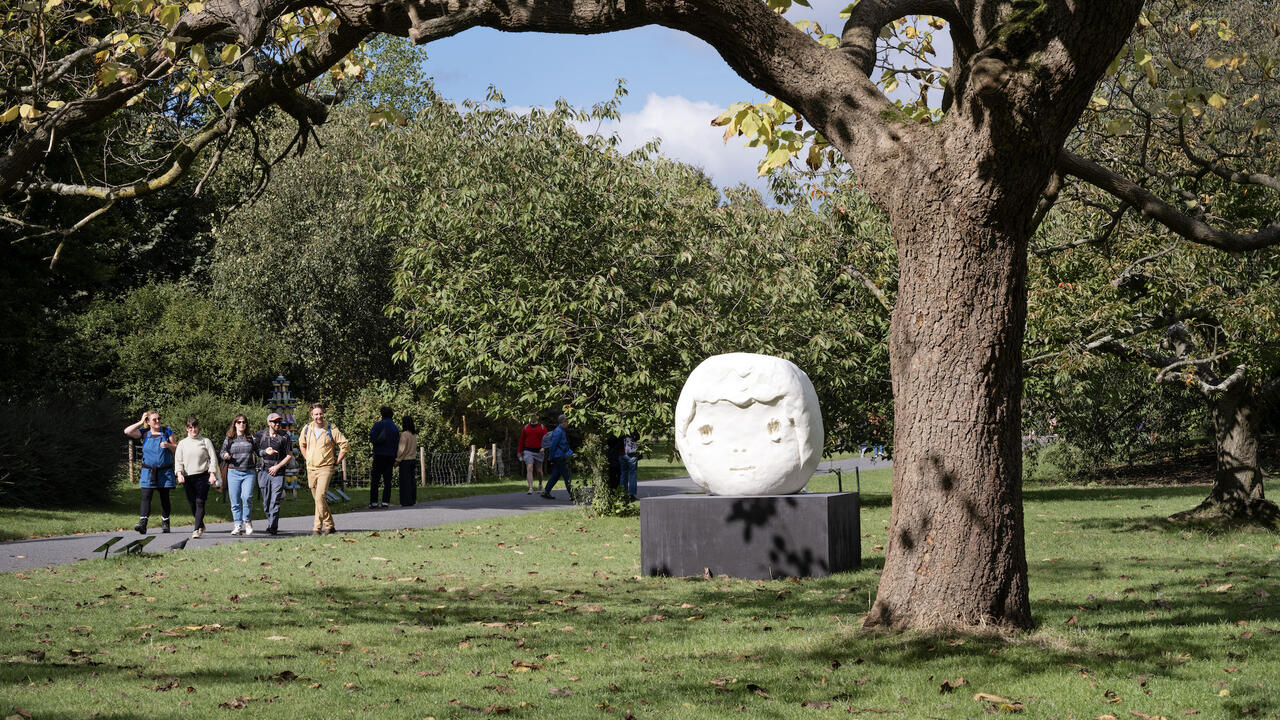Keith Wilson
If objects are defined by their context, then it follows that the meaning of all objects is malleable. Keith Wilson makes use of this conundrum to create new histories and possibilities, clashing objects together to override their accepted function.
Wilson's main installation at Milch looked like an obstacle course or a giant, unadorned pinball machine. Viewers, aka 'contestants', had to be lithe to navigate the space and were obliged to weigh in at the entrance on rusty industrial scales. White rails ran along the side walls, bumped and scuffed from their previous existence as horse racetrack buffers. Four pillars contrived out of chipboard seemed to be part of the architecture. Door veneers complete with handles were hung in a rotary formation around them, like static turbine boosters. Pushing the analogy a little too far perhaps, other targets and traps were strategically positioned throughout the space - a tall plinth with a thick plaited rope slung over a pole was like a utilitarian golden fleece, while found metal grills were re-oriented into indistinct but vital constituent parts. At the far end of the space, penned in by a circular cattle feeder, a large, imperial black cone was the main target, the grand prize. Overseeing all of this, a Tannoy megaphone transmitted Radio 5 Live, supplying a sports commentary to boost the atmosphere at a horseless racecourse. The tragic mood of fairgrounds in winter and obsolete technologies was pervasive, brought on by the futility of obstacles that had no objectives to strive for.
Wrenching components, large and small, from bygone industrial and technological eras, Wilson favours a 1950s science lab aesthetic where surface is corroded and colour - predominantly beige, brown or duck-egg blue - is muted. Old metal and wood was, on the whole, left as it was found. But this was not simply a Duchampian displacement compulsion - there was too much construction in evidence. Occasionally an object was reinvested with a new, sly surface that emulated the process of ageing and usage. A set of steps painted with a camouflage of many different whites quietly blazed against the grey gallery floor, while an immaculate black cone had no former practical life but was specially made for the show. Its surface was so different from anything else, it looked detached, as if committed to its own purposelessness. This cone first appeared as a site-specific piece at Whitby Abbey last year and could possibly resurface in the future, as other objects have throughout Wilson's career. It's this mixing of site-specific work, witty couplings and an investment of autonomy in found objects that prevents Wilson from simply being an omnipresent curator of artefacts; instead he is an an artist who builds up a vocabulary of formal puns and a reserve of perverse combinations.
Upstairs in the smaller project room macabre hybrids covered the floor and roosted on plinths. There was a fervent level of activity, as though innumerable systematic potterings had been edited down. The implication was not of play but of intense work, revision and resolution. Pseudo-scientific experiments had been performed on domestic objects to create new mongrels: a pair of shoes given a toe job, the multifarious brown stripes adding a new lustre to the old leather; a tatty, paint-splattered chair saved from an undistinguished future by an ornate curl grafted on to one arm with chenille wool wrapped round as a secret handshake. The level of manipulation increased as the size of the objects diminished. Laboratory glassware and casts of false teeth were given a new look with marker pens. Lumpen hoops bound in tape or wool were scattered about like recurring DNA structures. Teeming with wire racks, knobs on sticks and unnamable doofers, the room was an arcade of previously unknown common sense.
It is not often that found objects are used with a lyrical ambiguity; their past clings to them so vehemently that they are often better used with repetition as a smoke screen, or avoided altogether. Richard Wentworth, turning plates into clouds, releases the poetics of stuff by piling it up, while Mike Nelson resurrects an item by honouring its original use. Wilson, however, seems to be searching for the inevitable fate of objects through a pragmatic logic. The success or failure of a piece of work is still valid in a world where objects would appear to have secret desires.















